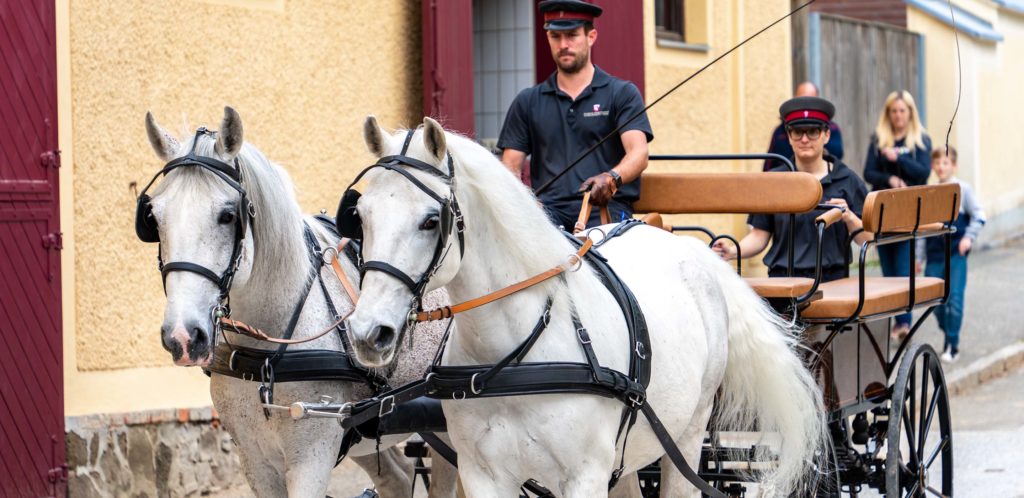When wars end and a peace treaty is written up, usually it is land and important resources that are divided up. When World War I finished and the Austro-Hungarian Empire was being shared in 1918, a group of horses became part of the negotiations.
These were not any old horses, though. They were the famed Lipizzaner horses – so important that everyone wanted a share. And, although they were indeed distributed between several countries in the final treaty, it was Austria who kept the most significant of them all – the main stallions.
It is the descendants of these stallions who still make up the famous white horses of the Spanish Riding School in Vienna, whose classical dressage performances are a highlight of the Austrian capital.
Performances in the palatial white riding school built in 1735 were once only for guests of the court, but another consequence of the fall of the Austro-Hungarian Empire in 1918 was that the school had to open to the public to help pay the bills.
Brief history of the Lipizzaner horses
Hang on, what are the Lipizzaner horses and why is it called the Spanish Riding School if it’s in Austria? Good questions, so let’s just quickly run through the background.
The Lipizzaner horses (also known just as the Lipizzan) can trace their origin all the way back to 1580, when the ruling Habsburgs wanted to breed a new type of horse that would be good for both military purposes and for prestigious riding schools. To do this, they brought the Spanish Andalusian horse to Austria and began to mix it with other stock from across Europe.
Although this breeding took place in two locations, the main one that is relevant to the horses we know today was in the village of Lipica (spelled Lipizza in Italian), which is obviously where the name comes from. Lipica is in Slovenia these days and there’s still a stud farm with more than 300 horses.
Eventually the Habsburgs were happy with the breed they had created by blending all these attributes. By the 18th century, this main stud at Lipica had identified six ‘foundation stallions’ that all the future Lipizzaner horses would be descended from.
While many tourists who visit Vienna will go to one of the school’s performances or take a guided tour of the facilities, there’s another way to get up close to the Lipizzaner horses – here in the southeast of Austria near Graz, at the Piber Stud Farm where they are all born and raised.
The Piber Stud Farm
Only the best of the best end up at Vienna’s…
Click Here to Read the Full Original Article at Time Travel Turtle…
